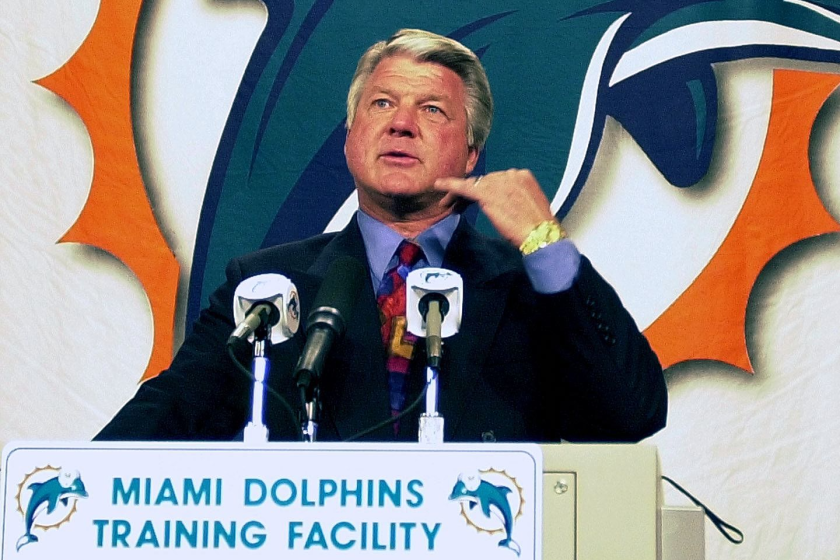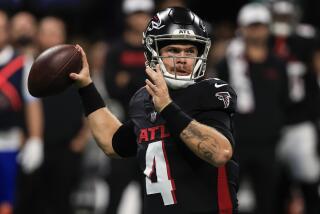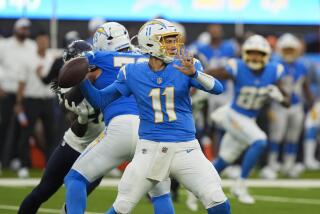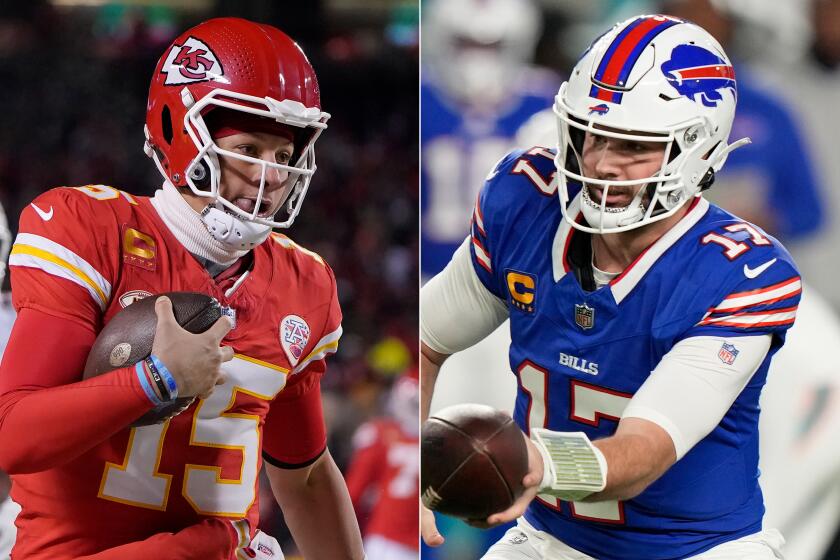Once Chargers tackled Round 1 of NFL draft, the rest fell in line
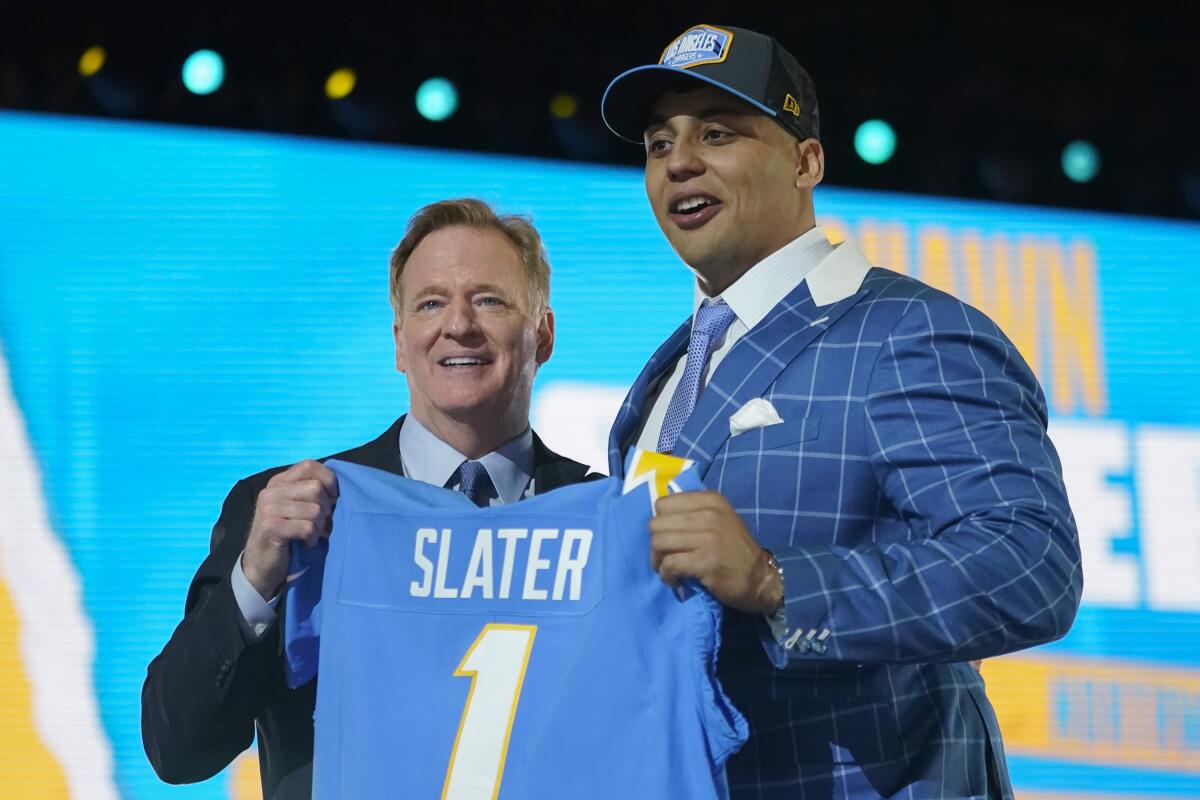
- Share via
They made nine picks that addressed two obvious needs and six positions specifically, and also potentially beefed up what had been some lean special teams.
The draft for the Chargers appeared to end quite well Saturday — but only after it started quite well Thursday.
“When you hit on that first-round pick, a guy that really everybody’s so excited about … everything else can kind of fall in place,” general manager Tom Telesco said. “That’s kind of what happened.”
Selecting 13th overall, the Chargers filled a hole at left tackle with Rashawn Slater, who played college football at Northwestern and widely was considered to be one of the draft’s two top offensive linemen.
His addition was vital as Telesco has rebuilt the group assigned to protecting quarterback Justin Herbert and making the ground game go. The Chargers will enter the 2021 season with four new starters up front.
The L.A. Chargers addressed their most pressing roster need in the first round of the NFL draft, drafting Northwestern offensive tackle Rashawn Slater.
They also needed a starter at cornerback and found one with their next selection — in the second round Friday — in Asante Samuel Jr., who is expected to take over for the departed Casey Hayward.
From there, Telesco turned to attempting to find depth and competition, a process that culminated Saturday with five picks — three on defense and two on offense.
The Chargers added a pair of linebackers in Chris Rumph II (fourth round out of Duke) and Nick Niemann (sixth round, Iowa) and a defensive back in Mark Webb (seventh round, Georgia).
Offensively, they selected lineman Brenden Jaimes (fifth round, Nebraska) and running back Larry Rountree III (sixth round, Missouri).
Rumph will play on the edge in a defense that is being revamped under new coach Brandon Staley. Rumph’s instincts and speed should jell with the Chargers’ scheme in attempting to combat more mobile, creative quarterbacks.
The Chargers started Day 2 of the NFL draft by picking a potential starter on defense, cornerback Asante Samuel Jr. out of Florida State.
“You gotta have players on the edge who can play on their feet, that can do a lot of different jobs,” Staley said. “That’s kind of the style of how we play.”
Rumph finished his three-year career at Duke with 17.5 sacks, including eight last season.
His father, Chris, was a longtime coach in college — including stints at Alabama, Florida and Tennessee — and now is an assistant with the Chicago Bears.
“I’d definitely say my IQ,” Rumph answered when asked to identify his strength as a tackler. “I just have an instinct, trying to get to the ball. It’s in my blood.”
Niemann, who will play inside, also is a coach’s son, his father, Jay, an assistant at Iowa. His brother, Ben, is a linebacker with the Kansas City Chiefs.
“I definitely still have a high ceiling in front of me,” Niemann said. “I just have a good nose for the football in general.”
Webb will join the Chargers being familiar with one of his new teammates. He and safety Nasir Adderley played football together as kids in the Philadelphia area. Detroit Lions running back D’Andre Swift is Webb’s cousin and also played on the same pee wee team.
Webb mostly lined up at nickel last season at Georgia but also has played safety.
“I just do it all,” he said. “ ‘Mr. Everything.’ That’s what I call myself.”
Telesco said Rumph, Niemann and Webb each will be expected to play special teams, an area where the Chargers struggled in 2020.
Rountree also will be a special-teams candidate as he tries to squeeze onto a roster where the Chargers already have veteran running backs Austin Ekeler and Justin Jackson and 2020 fourth-round pick Josh Kelley.
Jaimes should provide depth behind the Chargers’ new offensive line. He played tackle at Nebraska but also will see some time at guard now.
Beneath its polished exterior, the NFL draft can often be a confusing time for team executives and players. Here are some amusing stories from past drafts.
In explaining what the Chargers are trying to accomplish up front, Staley said the goal is to become “more of a line of scrimmage team.”
“When we walk out there to play, I want to feel good about who’s out there,” he said. “I want to know that these are a bunch of real guys blocking for us that are really setting the tempo for our offense.”
With only right tackle Bryan Bulaga returning among the starters, Telesco acknowledged that things have progressed quickly.
“I thought it might be more of a two-year project,” he said. “It can be hard to do that in one offseason. … I’m happy with what we have right now up front, happy with some depth. It’s never perfect, but I feel pretty good about it.”
Etc.
The Chargers signed 10 undrafted free agents: Ben DeLuca (defensive back, Charlotte), Jared Goldwire (defensive line, Louisville), Darius Harper (tackle, Cincinnati), Hunter Kampmoyer (tight end, Oregon), Alex Kessman (kicker, Pittsburgh), Ryan Langan (long snapper, Georgia Southern), Forrest Merrill (defensive lineman, Arkansas State), Amen Ogbongbemiga (linebacker, Oklahoma State), Kyle Spalding (tackle, San Diego State) and Elijah Stove (wide receiver, Auburn).
Draft picks
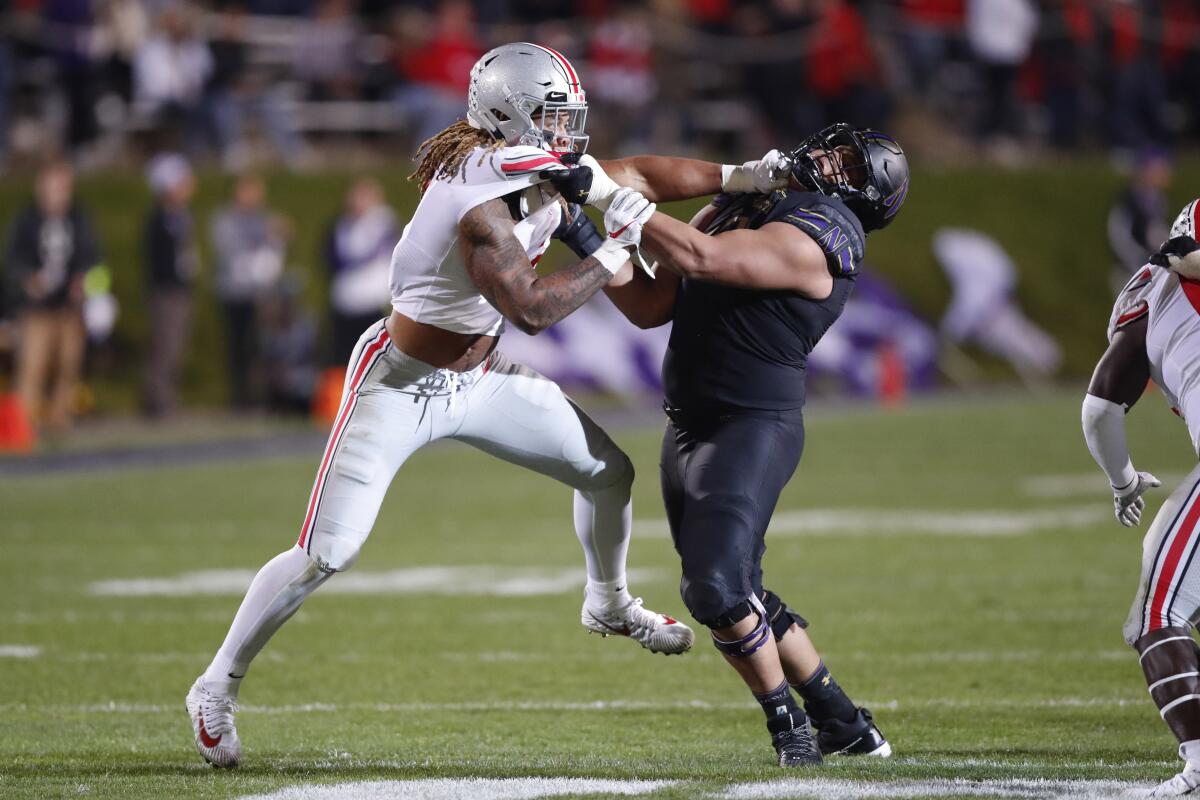
RASHAWN SLATER, OFFENSIVE TACKLE
6 feet 4, 304 pounds, Northwestern, Round 1, Pick 13
Notable: Slater was a three-year starter in college and has experience at both left and right tackle. He separated himself during the 2019 season with a strong showing against Ohio State’s Chase Young, the No. 2 overall pick last year.
Last season: Slater opted out of 2020 because of the COVID-19 pandemic. He has said that not playing allowed him to concentrate more on NFL-specific skills.
Why the Chargers drafted him: General manager Tom Telesco has rebuilt the team’s offensive line, with only right tackle Bryan Bulaga returning among the starters. Slater gives the Chargers a young left tackle to help protect Justin Herbert, the NFL’s top offensive rookie last season. Telesco hadn’t used a first-round pick on an offensive lineman since selecting D.J. Fluker at No. 11 in 2013.
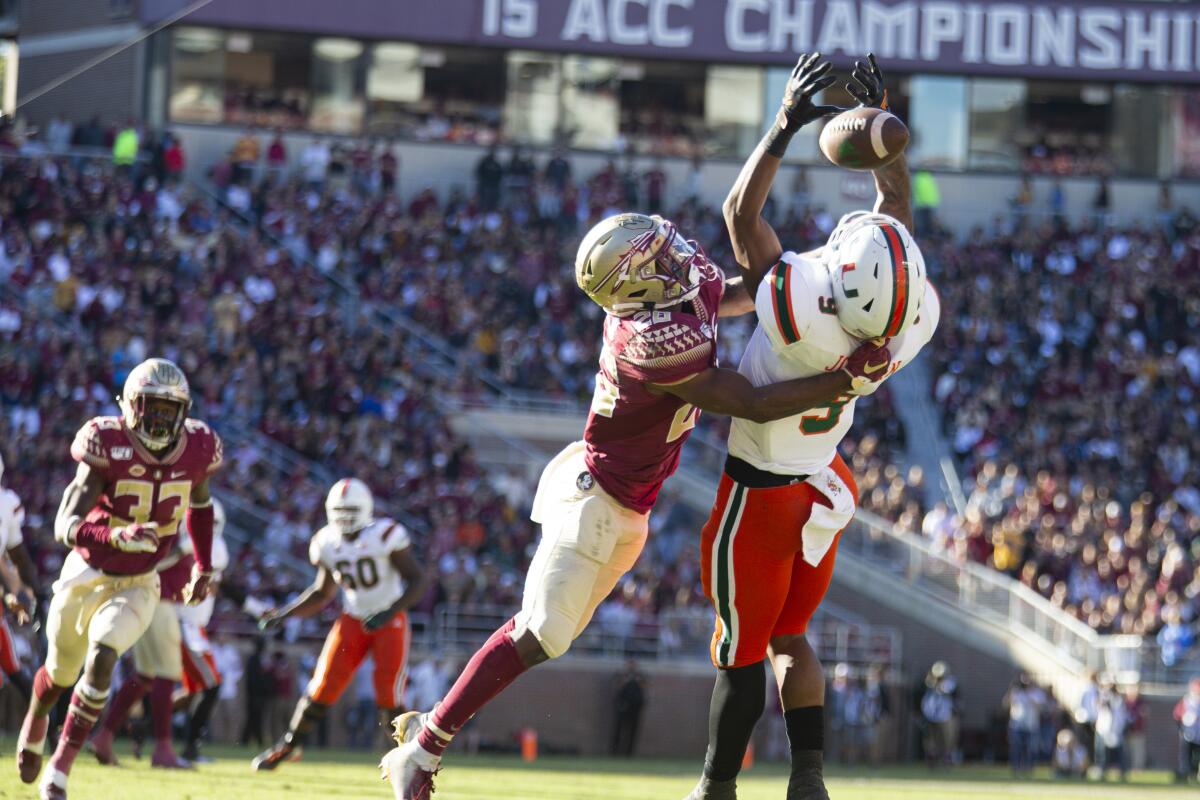
ASANTE SAMUEL JR., cornerback
5 feet 10, 180 pounds, Florida State, Round 2, Pick 47.
Notable: Samuel’s father, Asante Sr., played in the NFL for 11 seasons. He was an All-Pro corner for New England in 2007 and also played for Philadelphia and Atlanta, making four Pro Bowls.
Last season: Appearing in eight games for the Seminoles, Samuel finished with 30 tackles and three interceptions.
Why the Chargers drafted him: After addressing one starting need at left tackle (Rashawn Slater) in the first round Friday, the Chargers took care of their other starting need by adding Samuel. They needed a replacement for veteran Casey Hayward, who was cut in March after five seasons with the team. Samuel brings impressive bloodlines and an edge but also lacks the sort of size at corner some teams prefer.
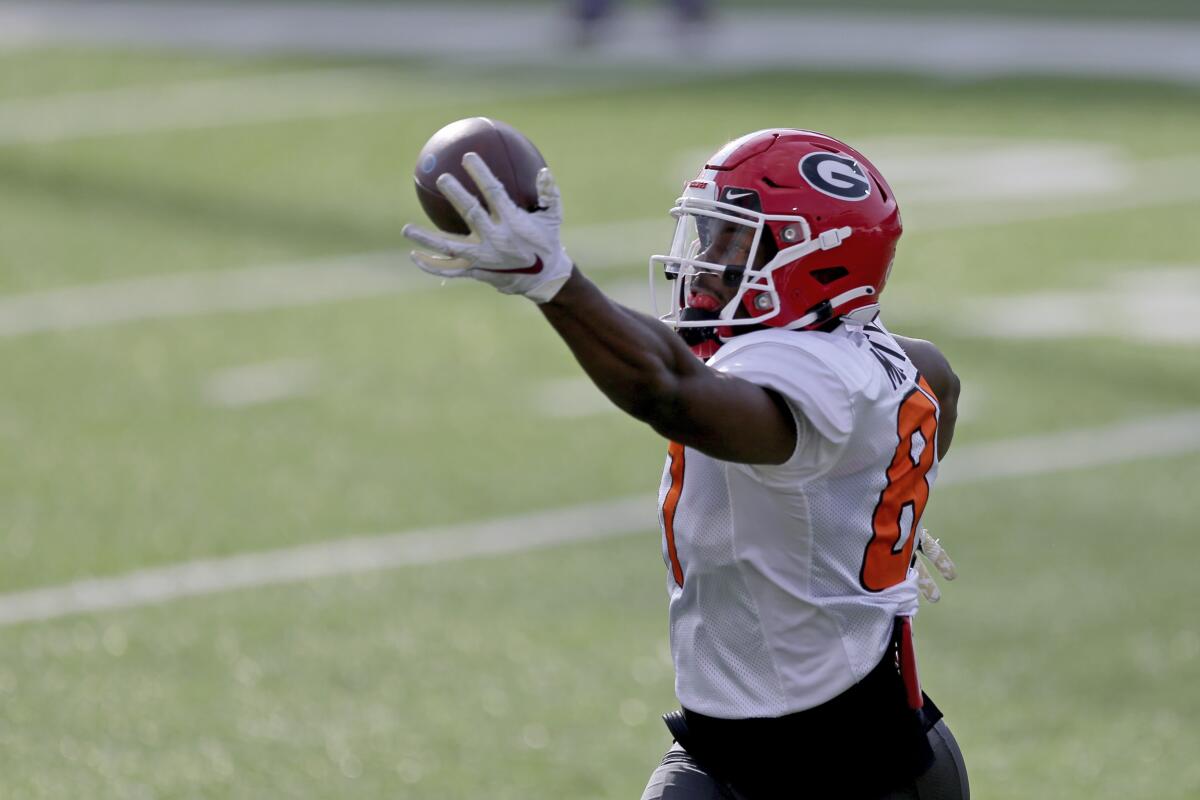
TRE’ McKITTY
6 feet 4, 246 pounds, Georgia, Round 3, Pick 97.
Notable: McKitty played three seasons at Florida State before finishing his career at Georgia, where his pass-catching production fell off dramatically last year.
Last season: He caught six passes for 108 yards and a touchdown in four games for the Bulldogs.
Why the Chargers drafted him: After the free-agency departure of Hunter Henry to New England, the Chargers signed veteran tight end Jared Cook. McKitty provides further depth and pass blocking immediately and could develop into a more significant offensive piece for Herbert.
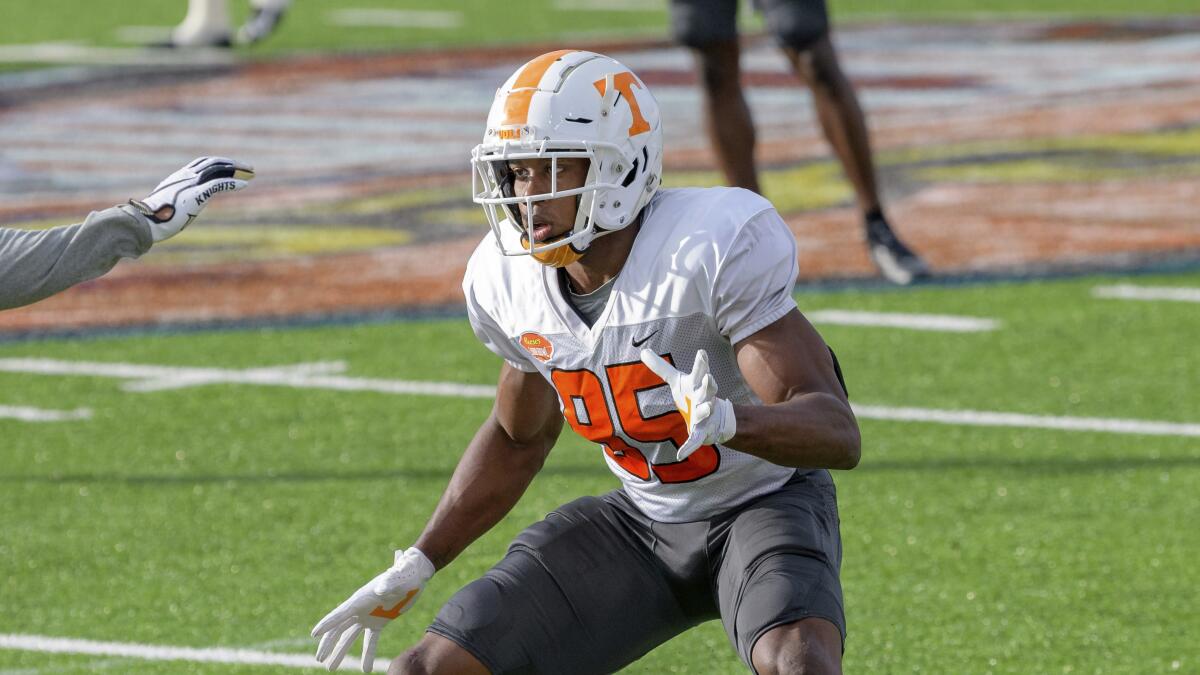
JOSH PALMER, wide receiver
6 feet 1, 210 pounds, Tennessee, Round 3, Pick 77.
Notable: Born in Canada, Palmer was known for his hands in college. He had no drops in 2020 and only four on 164 targets during his time with the Volunteers.
Last season: Palmer had 33 receptions for 475 yards and four touchdowns for a Tennessee team that struggled to a 3-7 finish.
Why the Chargers drafted him: With a quarterback such as Justin Herbert, a team can never have enough options at receiver. Behind Keenan Allen and Mike Williams, there is room for more production from the position and Palmer will be given an opportunity to prove he can make plays.
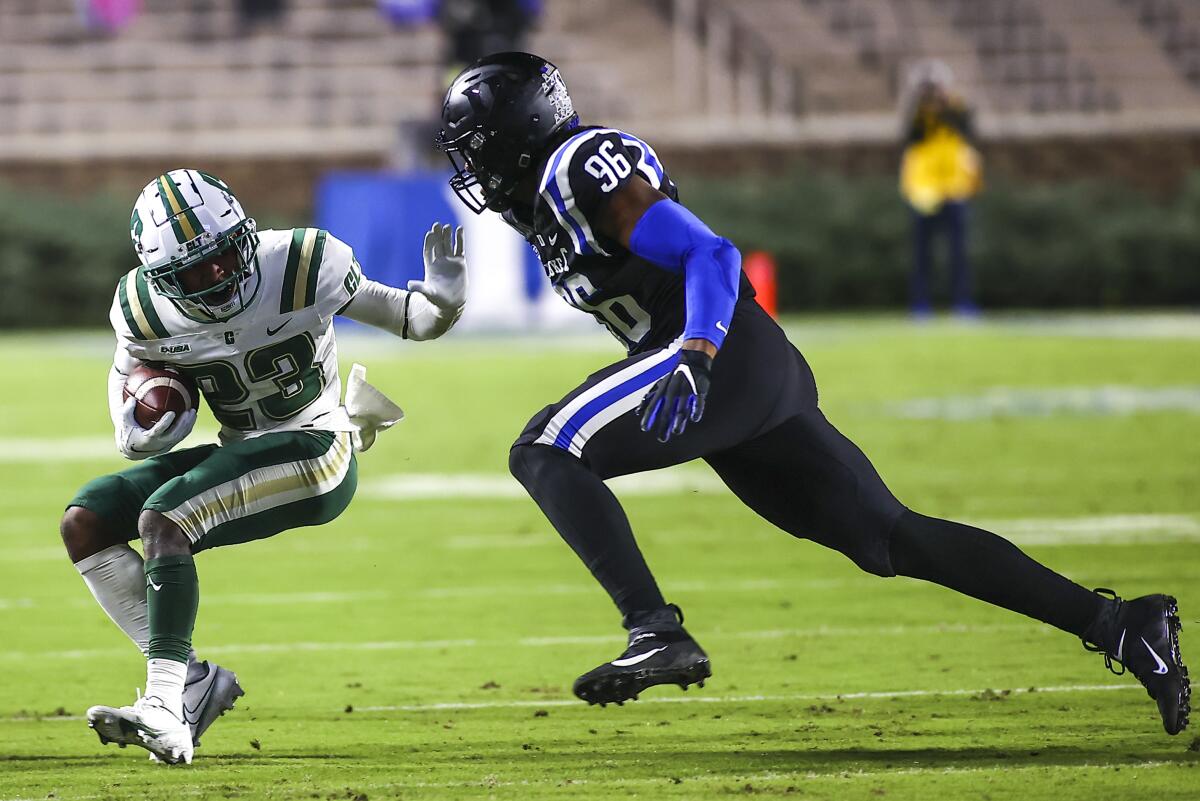
CHRIS RUMPH II, edge rusher
6 feet 3, 244 pounds, Duke, Round 4, Pick 118
Notable: Rumph’s father, Chris, was hired to be the defensive line coach for the Chicago Bears in January.
Last season: Rumph had eight sacks and 52 tackles in his third season at Duke, where he finished with 17.5 career sacks.
Why the Chargers drafted him: Transitioning to a defense with more of a 3-4 front, the Chargers were looking to bolster their presence on the edge. They signed veteran Kyler Fackrell in free agency to do that and now add more depth with Rumph.

BRENDEN JAIMES, offensive lineman
6 feet 6, 300 pounds, Nebraska, Round 5, Pick 159
Notable: Jaimes finished his career with a streak of 31 consecutive starts at left tackle and 40 starts in a row overall, a school record for an offensive lineman.
Last season: He started Nebraska’s first seven games before opting out of the season finale to start preparations for the 2021 NFL draft.
Why the Chargers drafted him: Having rebuilt their offensive line with four new starters, the Chargers are adding depth in Jaimes, a native of Austin, Texas, and someone who played a lot of football in college. He’s expected to compete for one of the game-day backup roles in 2021.
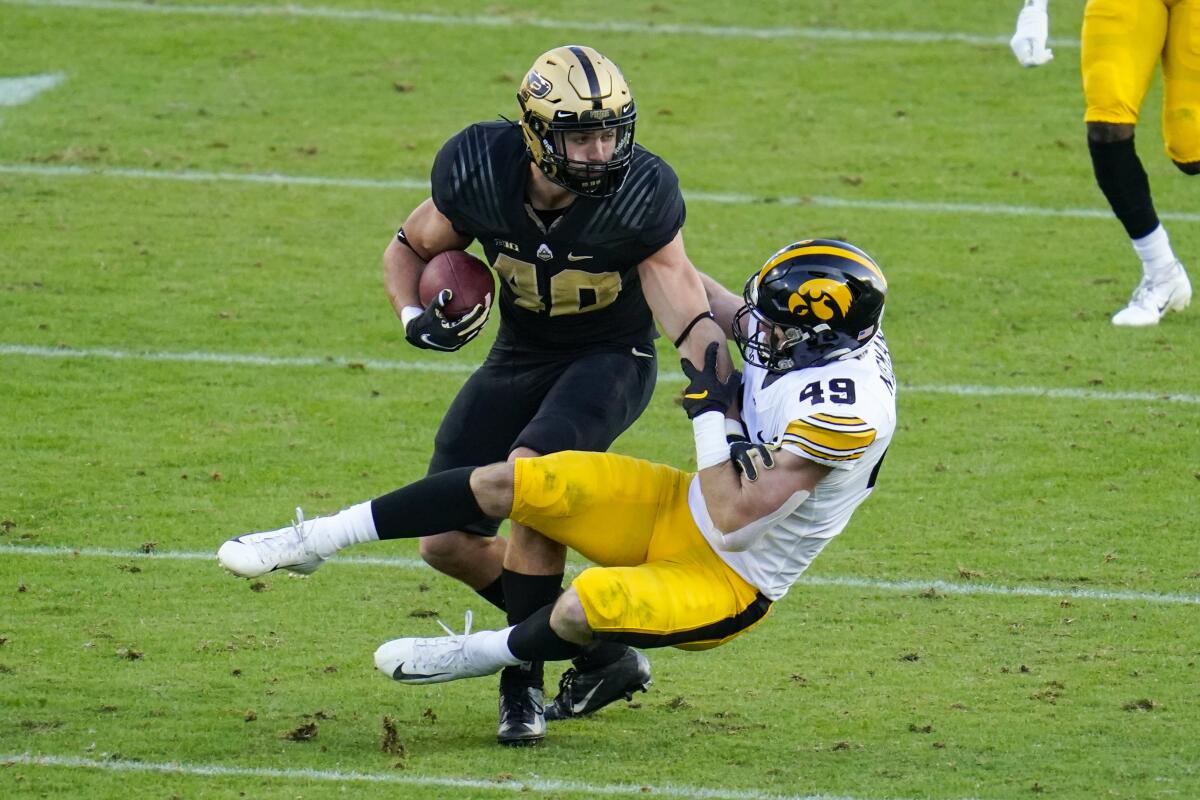
NICK NIEMANN, linebacker
6 feet 3, 234 pounds, Iowa, Round 6, Pick 185
Notable: Niemann is another coach’s son. His father, Jay, is a longtime coach who is now an assistant at Iowa. His brother, Ben, also played linebacker for the Hawkeyes and now is with the Kansas City Chiefs.
Last season: He started all eight games, seven starts at weak-side linebacker and one at middle linebacker, and led the team with 77 tackles.
Why the Chargers drafted him: Niemann is likely to be a special teams contributor right away. He played special teams especially early in college. The Chargers struggled mightily covering kicks in 2020 and have been attempting to build a roster to ensure those issues don’t extend into 2021.
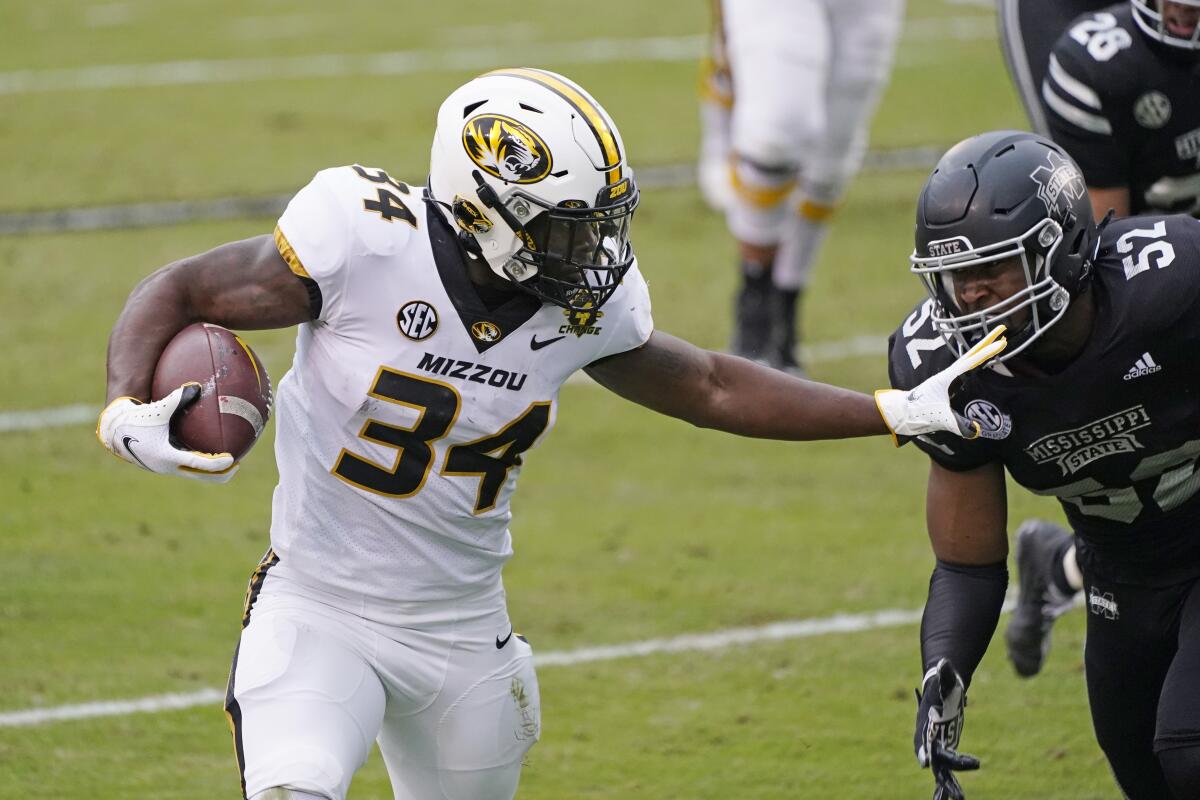
LARRY ROUNTREE III, running back
5 feet 11, 211 pounds, Missouri, Round 6, Pick 198
Notable: Rountree finished as one of the greatest running backs in school history and a fan favorite because of his bruising running style. His draft push was aided by a solid week at the Senior Bowl.
Last season: He finished 2020 with 972 yards and 14 touchdowns in 209 carries for a Tigers team that went 5-5.
Why the Chargers drafted him: Known as a tough, physical runner, Rountree offers potential depth at a position where players do tend to get beat up. He will compete for a backup role behind Austin Ekeler, Justin Jackson and Josh Kelley.
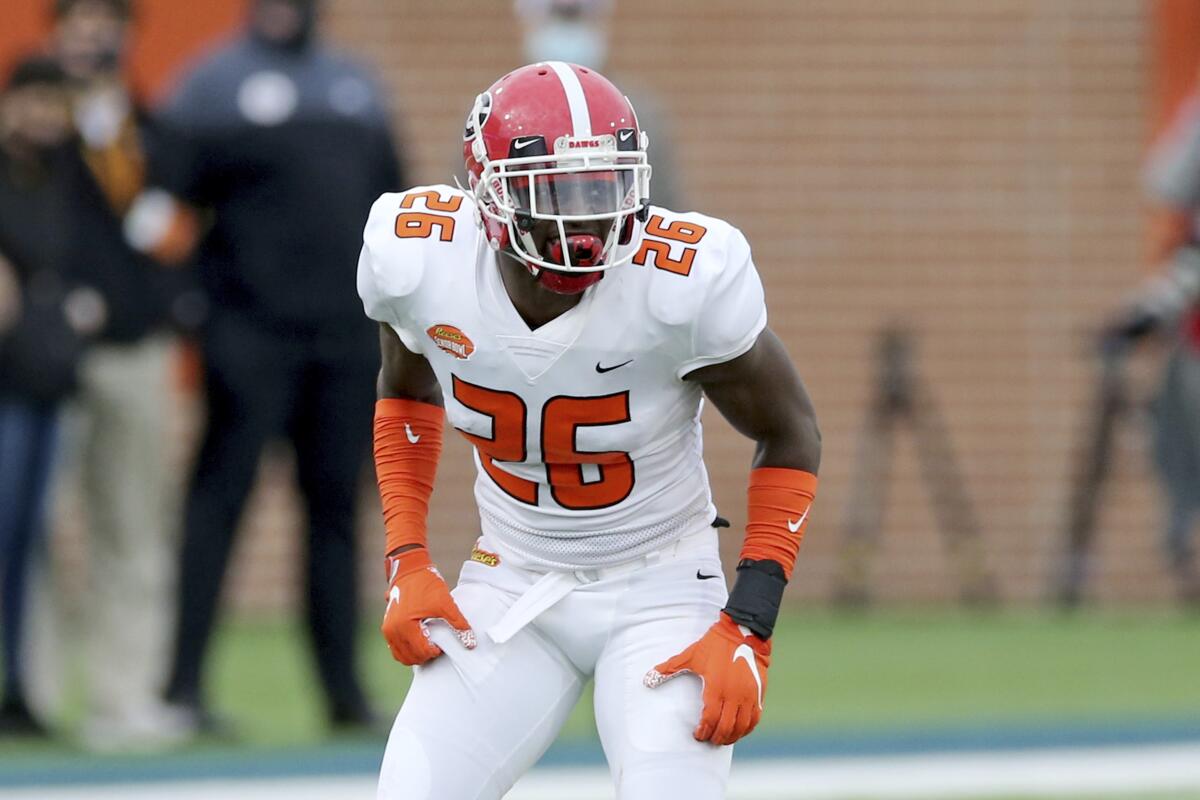
MARK WEBB, safety
6 feet 1, 207 pounds, Georgia, Round 7, Pick 241
Notable: Webb began his career at Georgia as a wide receiver before moving to the defensive backfield after one game.
Last season: Appearing in seven games for the Bulldogs, he had 21 tackles and an interception.
Why the Chargers drafted him: With only three safeties on their roster entering the draft, the Chargers were in need of adding some depth. Webb is a story of perseverance having remained at Georgia after deciding to switch from offense to defense.
More to Read
Go beyond the scoreboard
Get the latest on L.A.'s teams in the daily Sports Report newsletter.
You may occasionally receive promotional content from the Los Angeles Times.



